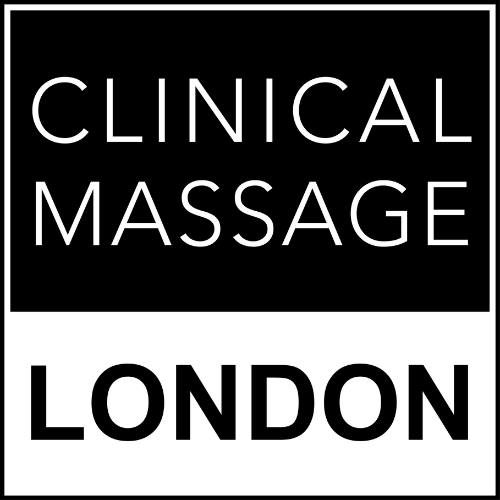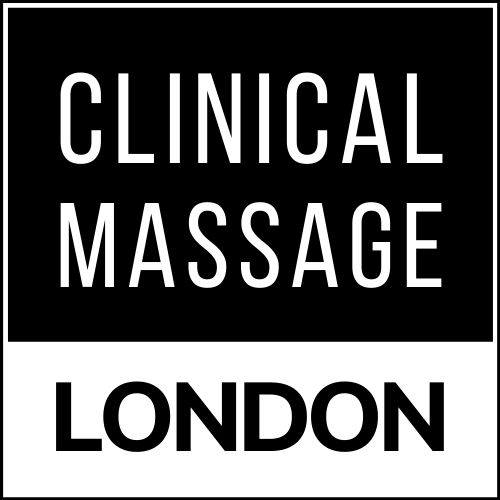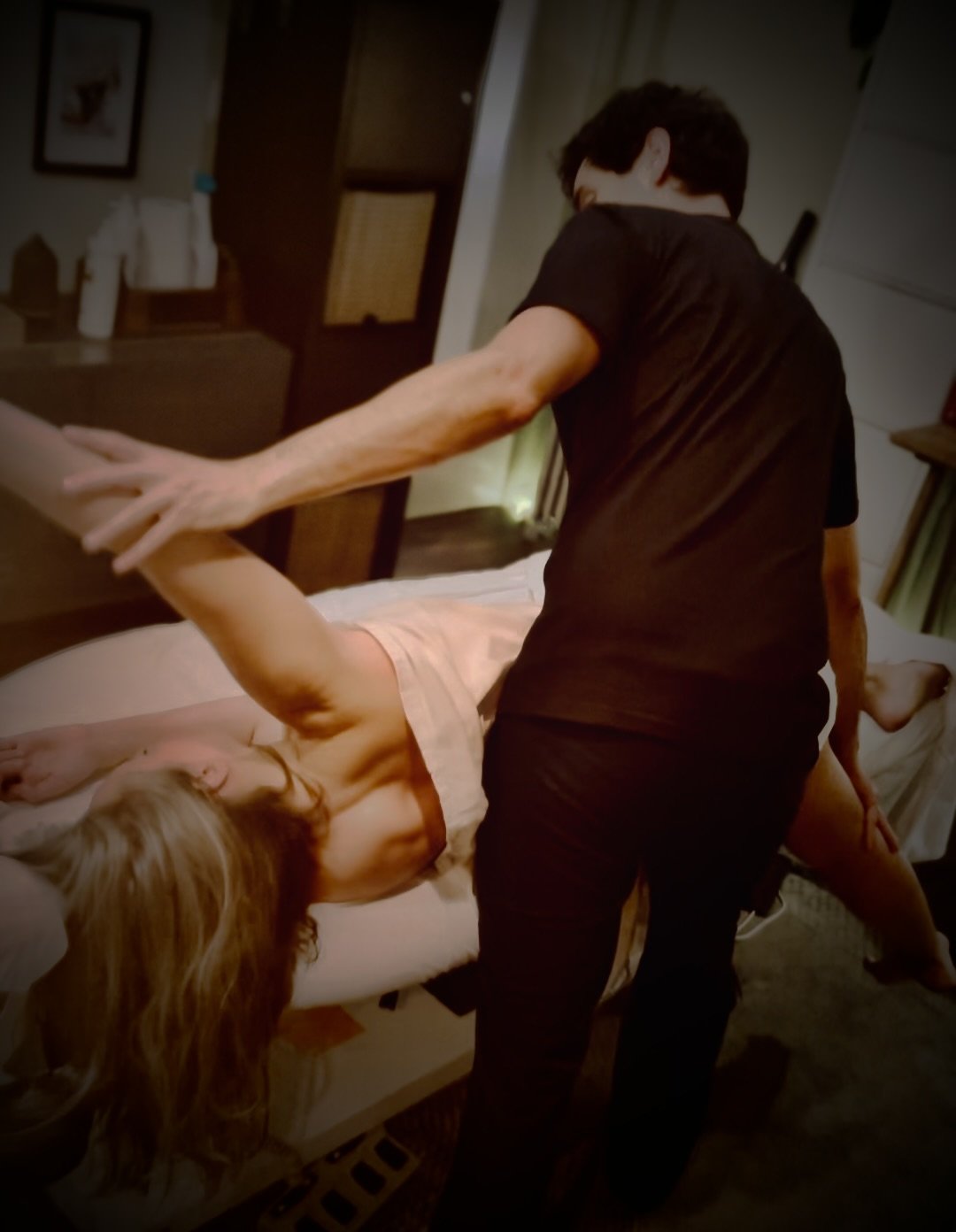
Sports Massage
What is Sports Massage?
The term ‘sports massage’ arose when the therapeutic benefits of massage were popularised among athletes, and is similar with ‘clinical’ massage in the sense that it entails a knowledge-based approach to treating soft tissue conditions and disorders, differing mainly in that it is primarily aimed at athletes.
Here is the Complementary and Natural Healthcare Council’s official definition of ‘Sports Massage’
Sports massage is a soft tissue treatment, primarily aimed at athletes to ease muscular tension and minor injuries received as a result of sport. However, it is not exclusive to athletes, as many people prefer the often deeper, sometimes more intense, massage delivered by sports massage therapists.
When and How is Sports Massage Used?
Sports massage is predominantly used as part of an athletes training program, complementing progressive training and minimising potential incidences of injury by reducing muscle tension. It can be used in a variety of situations; pre-event which is typically used to prepare the athlete physically and help with mental preparation, inter or intra-event which helps prepare the muscle for subsequent activity, post-event which can aid relaxation following activity and can be used to assess muscle condition for potential injury. Sports massage therapists work alongside medical and health care teams as well as within sporting environments.
What to Expect During a Sports Massage Session
A typical session would begin with a discussion between the practitioner and the client to seek the client’s relevant personal details, medical history and reason for the visit. Using this information the practitioner may then further observe posture, client’s movement, evaluate the tissue by touch and carry out specific functional tests to establish the possible cause of discomfort or injury. Using this information, and in conjunction with the client an appropriate treatment plan will be developed. All assessments and treatment will be explained to the client and informed consent will be sought.
Personalised Treatment Plans and Consent
The client may be asked to undress or perhaps change into sports wear for the assessment and treatment. The treatment will be tailored to address the needs of the client and may include the application of a variety of soft tissue techniques and functional movement skills. These may necessitate movement by the client. Following treatment the practitioner will offer homecare advice to facilitate or continue the treatment effects and advise in the case of adverse reactions. The therapist may also suggest referral to another practitioner if treatment is not within their remit. Typically, a sports massage will include a variety of techniques including deep tissue massage, myofascial release, trigger point therapy, Swedish massage and sports stretching, applied with a broad or specific focus tailored to the needs of the client
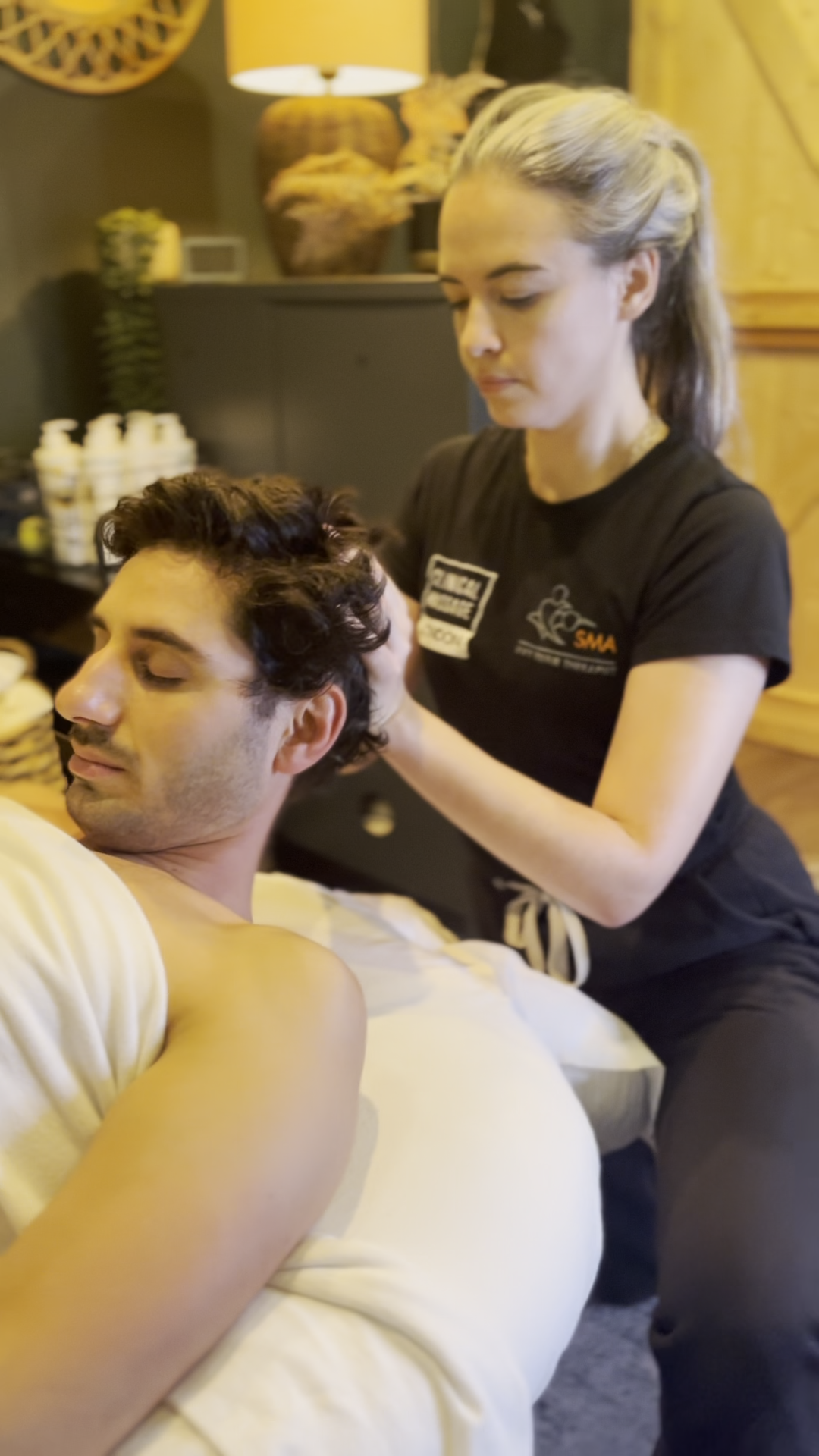
Here are some types of stretching techniques you may encounter during a sports massage:
Passive Stretches in Sports Massage
There’s something about having someone else take you into a stretch that feels incredibly productive.
Aside from feeling great, stretches are good for helping to increase range of motion in a joint, by lengthening and improving blood flow to the tissues. I’ll often take my clients into a passive stretch where I ask them to breath through, as we move the joint to it’s end of range.
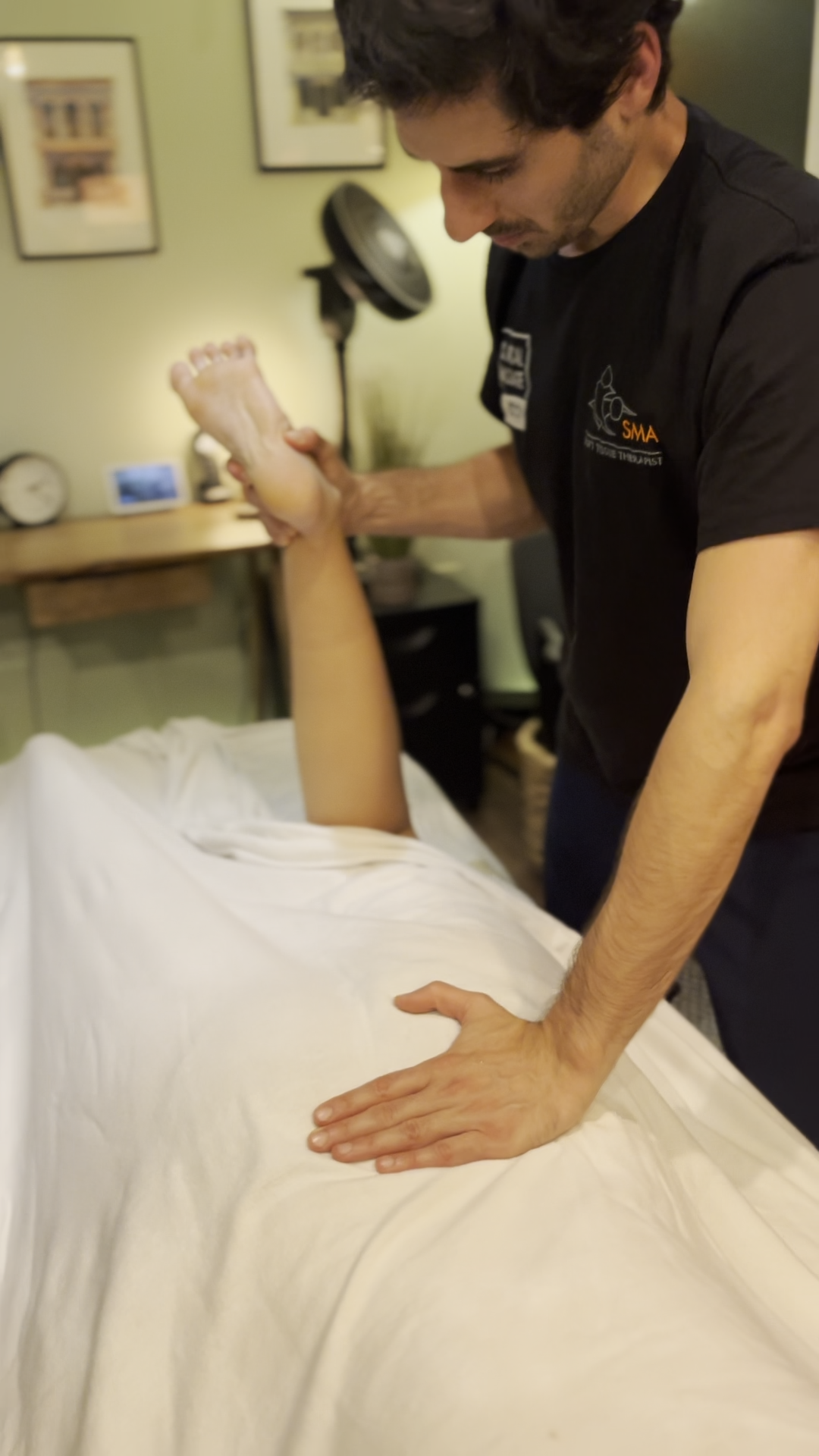
PNF Stretching in Sports Massage
Aside from passive stretches, dynamic stretching techniques add a different dimension to stretching - employing a neurologic reflex to further enhance the efficiency of the stretch.
One of our favourite techniques is PNF stretching (a.k.a. proprioceptive neuromuscular facilitation). It’s also known as the contract-relax stretch, because it involves taking your joint to its end of range and then getting you to resist gentle pressure for a number of seconds before letting go and allowing the therapist to take you further into the stretch.
PNF stretching makes use of what is known as the tendon reflex (a.k.a. the golgi tendon organ reflex), which inhibits a muscle from contracting in response to excessive contraction of that muscle.
This allows us to take the muscle further into a stretch than would otherwise be possible.
Active Isolated Stretching in Sports Massage
The other technique we sometimes use is known as Active Isolated Stretching (AIS), which involves getting the client to actively engage their agonist muscles, before applying two seconds of stretch to the joint’s end of range for its antagonist muscles.
This technique exploits a neurologic reflex known as reciprocal inhibition, which dictates that as a muscle contracts, its agonist relaxes.
It takes roughly two seconds for what is known as the myostatic stretch reflex to kick in - this is the body’s natural protective mechanism that causes a lengthening muscle to contract once it has been taken beyond a certain point in order to protect the muscle belly from being torn.
By limiting the stretch to two seconds, we can further enhance the stretch before the muscle begins contracting , allowing for better and faster results.
The isotonic contraction involved also makes AIS stretching a great warm up stretch, as this brings a greater amount of blood and oxygen to the muscles, allowing for better functional optimisation.
